Friday 🧵
1.After our journey through wet peatlands yesterday, we return to drier footing today. For this thread, we’ll go down to the woods and have a look at how forests planted on peat affect the carbon stored within.
Photos: @flo_renouwilson @JonayJovani


1.After our journey through wet peatlands yesterday, we return to drier footing today. For this thread, we’ll go down to the woods and have a look at how forests planted on peat affect the carbon stored within.
Photos: @flo_renouwilson @JonayJovani


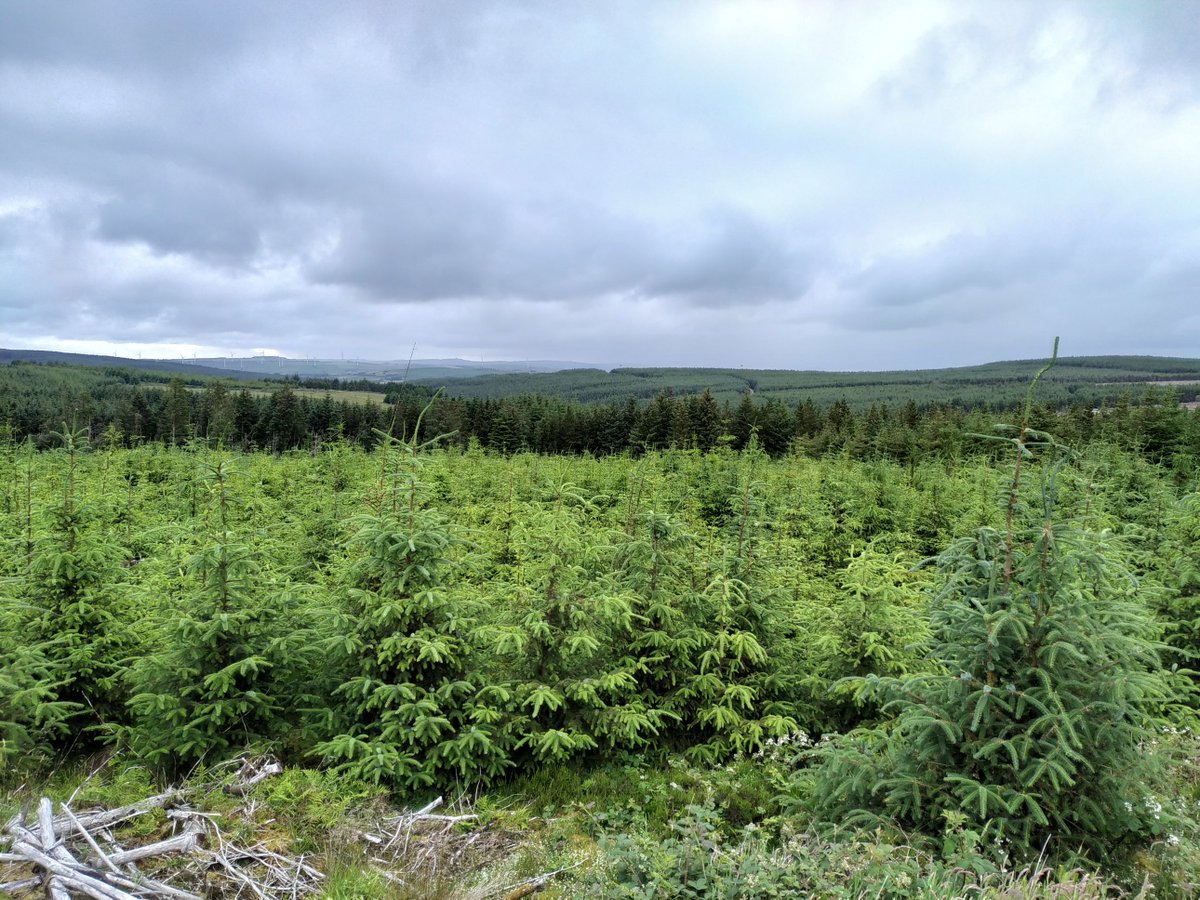
2.Forests in Ireland cover approximately 11% of the country but are largely monocultures composed of coniferous trees, such as Sitka and Norway Spruce.
https://twitter.com/IrishRainforest/status/1583331746631757825
3. In 2021, forests planted on peat soils were estimated to cover 453,000 hectares of the country (approx. 37% of the forest total), much of which was planted in the second half of the 20th century driven by State incentives. 

4. As with peat extraction (Wednesday’s thread), the site is extensively drained through the installation of ditches and also indirectly though the mounding prepared for the trees. 
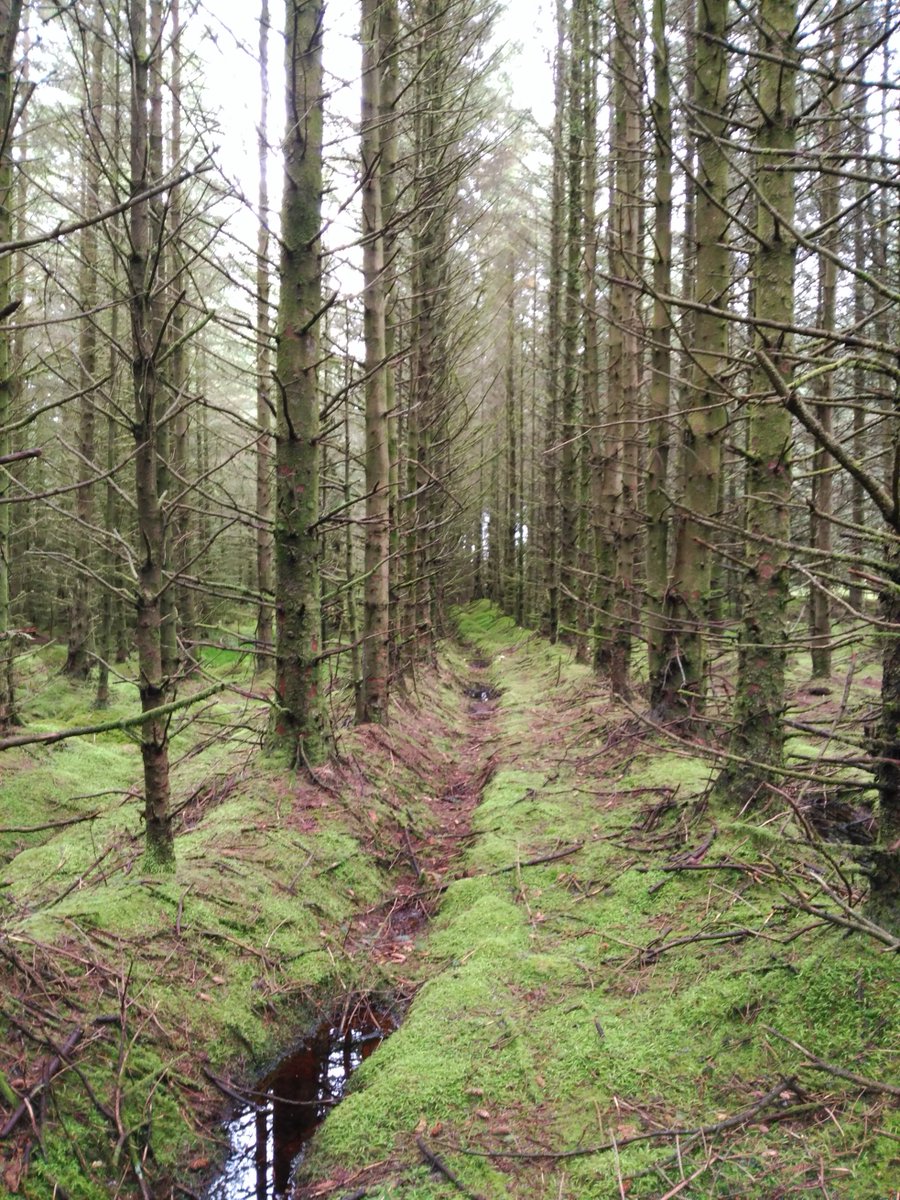
5.Losses of CO2 from the drained peat immediately occur following drainage as the peat decomposes but over time, losses will begin to be offset by the carbon sequestered by the growing tree stand. But does it ever compensate for the lost carbon. Let’s see.....
6. Directly measuring carbon exchange in forests is a tricky operation if eddy covariance sensors are used as they must be situated above the canopy, which requires a serious amount of scaffolding, and a reliable power supply + a technician with a good head for heights. 

7. To the best of my knowledge, there hasn’t been any results published from tower data on forested peatlands in Ireland, despite the establishment of the aforementioned towers on at least one forested peatland site in the west of the country.
8. Other estimation methods include a combination of destructive harvesting and measurement of soil CO2 emissions. The former involves cutting down a number of trees and determining their average volume and carbon content. 

9. More painfully for the poor researcher tasked with this job, belowground biomass must also be counted, which means carefully excavating the roots and also determining the amount of carbon within them, especially the fine roots ☹. 
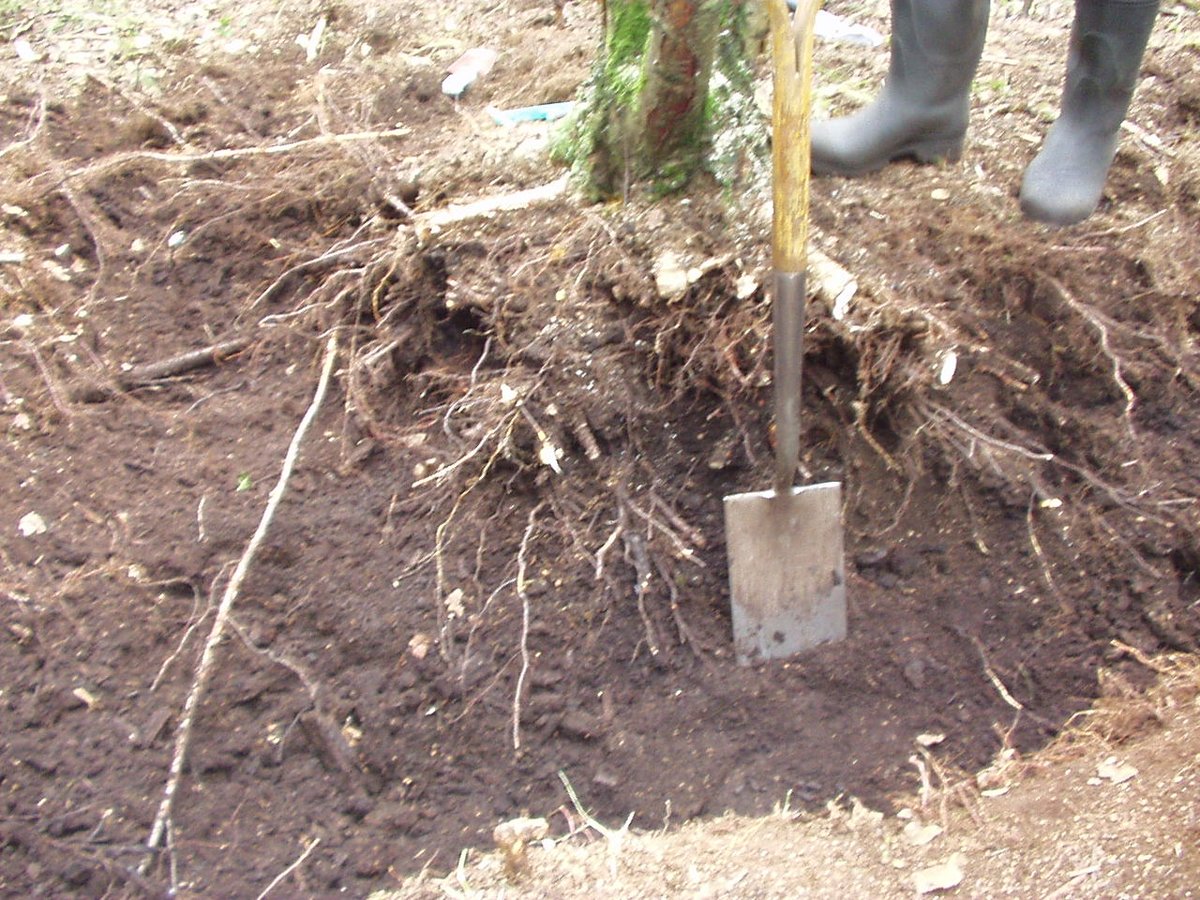
10. Knowing the age of the tree, then an average annual carbon increment can be estimated. Similarly, the litter layer is measured for average depth and carbon content and included in the calculation.
11. The contribution of the soil (peat) to the carbon balance is typically measured directly with small chambers, with care taken to avoid measuring CO2 from the roots of the trees as this would lead to double accounting. 

12. A recent study by @JonayJovani & colleagues provided much needed robust data for peat soil emissions as they investigated CO2 emissions in 8 forested peatlands in Ireland. 

13. Their data was subsequently used by @EPAIreland in reporting the contribution of the forest sector to national emissions.
14. In Ireland’s GHG National Inventory Report (NIR), forest CO2 data is reported under Land Use, Land Use Change and Forestry, a mouthful that is often more conveniently referred to as LULUCF (pronounced LULU.....CF). 

15. In the most recent NIR, which for the first time used the data published by @JonayJovani, forested peatlands in Ireland were estimated to be a very small CO2 sink of 0.4 tonnes hectare. 
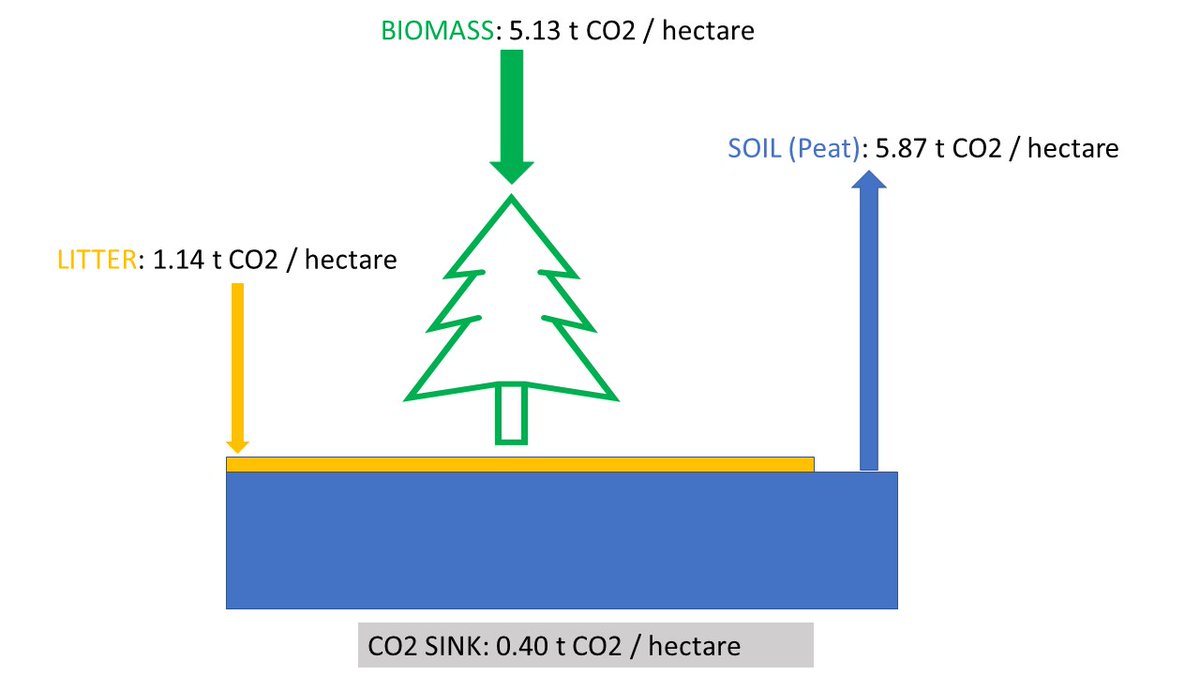
16.In Ireland, little is known of the carbon story once the forest stand is felled and replanted after the first rotation.
17. Research by Caitlin Rigney and colleagues at clearfell sites in the west of the country showed that the brash left on-site (the bits and bobs with no monetary value) is extremely problematic from a CO2 emissions point of view. Photo: @flo_renouwilson 

18. In the absence of effective rewetting, the brash will decompose over time and release some of the CO2 originally sequestered by the trees, back to the atmosphere.
mires-and-peat.net/pages/volumes/…
mires-and-peat.net/pages/volumes/…
19. Indeed, some of the forests on peat may never be harvested given their poor growth (and economic returns) - but what to do with them?
20.Forest-to-bog restoration in Scotland has been shown to have considerable potential in returning sites to functioning carbon sinks.
nature.com/articles/d4158…
nature.com/articles/d4158…
21. On some Irish sites, drain blocking has led to recolonisation by Sphagnum mosses, which surely bodes well for the future of the site, and the carbon contained in its cold yet welcoming embrace. 
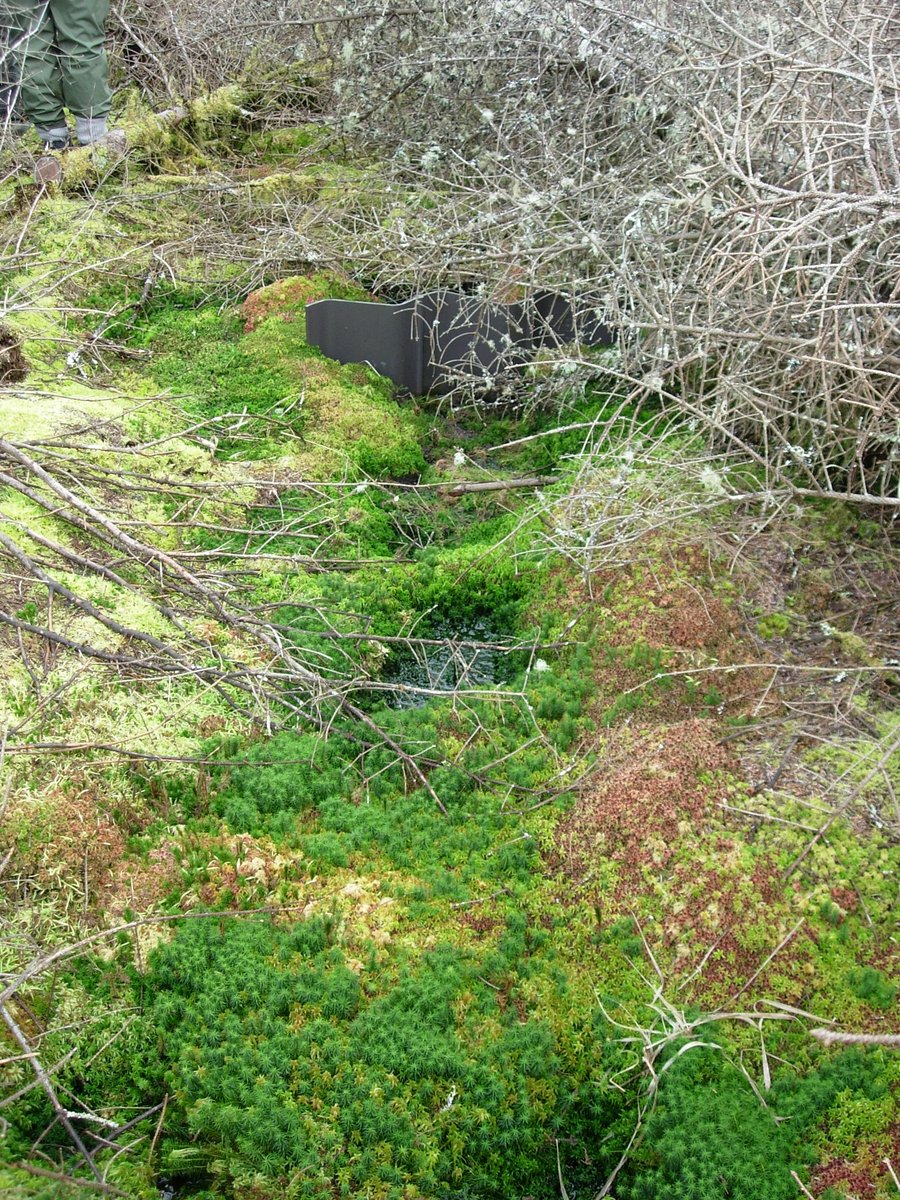
22. The plantation of native woodland on peat soils also faces the same issues with soil carbon losses, with the added disadvantage that the tree stand may not be as productive as a conifer stand (so less CO2 in).
23.Research by @kenbyrne8 at Turraun, Co. Offaly in the late 1990s showed that birch and willow scrub woodland growing on peat was an extremely large CO2 source, potentially due to enhanced decomposition of the peat by the inputs of fresh litter from the trees #hungrymicrobes.
24. However, new studies led by @stephenbarry01 @matts20000 are currently seeking to determine the carbon balance of woodland scrub areas on @BordnaMona lands. Given the large peatland area covered by forestry, much more research is clearly required.
25. Tomorrow, we’ll move onto grasslands on peaty soils. Wellies optional. See ya then.
• • •
Missing some Tweet in this thread? You can try to
force a refresh













